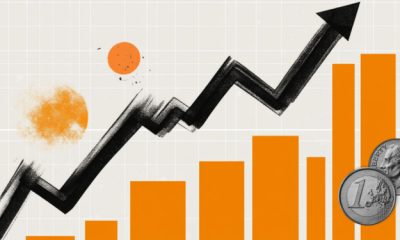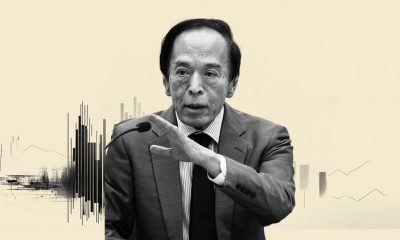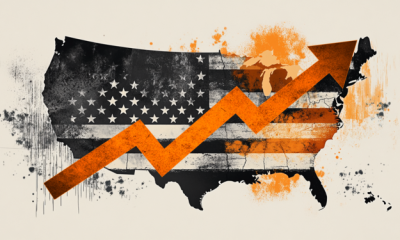

others
Gold holds onto recovery despite uncertainty over Fed’s rate-cut timing – Crypto News
- Gold price consolidates in a tight range near $2,030 while the US Dollar falls from a seven-week high.
- Fed policymakers abstain from offering timing for rate cuts.
- Considering the upbeat labor market, the Fed is expected to achieve a soft landing.
Gold price (XAU/USD) is stuck in a tight range, slightly above $2,030 in the London session on Wednesday. Gold, a non-yielding asset, is both supported and capped by the fact that whilst the Federal Reserve is poised to make rate cuts, uncertainty remains over their timing. Fed policymakers are holding back from unwinding the restrictive monetary policy stance too aggressively due to the current strength in labor demand and upbeat household spending.
The US Dollar Index (DXY) and bond yields, which are negatively correlated to Gold price, have eased despite the fact the Fed is unlikely to cut interest rates in March – something that would usually weigh on the Gold. Even expectations for a rate cut in May have decreased significantly as the Fed lacks evidence that inflation will slow sustainably to its 2% target. Fed policymakers are worried premature action on interest rates could flare up price pressures again, cautioning that the last mile in taming price pressures is always a difficult one.
Going forward, speeches from Fed policymakers’ Richmond Federal Reserve Bank Thomas Barkin and Federal Reserve Governor Michelle Bowman will be of utmost importance.
Daily Digest Market Movers: Gold price clings to recovery while US Dollar eases, yields correct
- Gold price consolidates in a narrow range around $2,030 as investors await fresh guidance from Federal Reserve policymakers over inflation and interest rates.
- The economic indicators for January released so far have indicated that the United States is outperforming expectations, which signifies a persistent inflation outlook.
- The US economic calendar is light this week, therefore investors are focusing on speeches from Fed policymakers for fresh cues about when the central bank will begin reducing interest rates.
- The speech from Cleveland Federal Reserve Bank President Loretta Mester delivered on Tuesday indicated that deepening uncertainty over inflation is not allowing policymakers to offer any timing for rate cuts.
- Loretta Mester said a robust labor market and resilient household spending have allowed the Fed to keep interest rates restrictive, giving them time to gather evidence about inflation declining sustainably to the 2% target.
- Mester added that the Fed is looking to bring down interest rates, and the forecast of three rate cuts this year is intact.
- Philadelphia Federal Reserve Bank President Patrick Harker didn’t provide any cues about easy policy in his prepared remarks. However, he said the Fed is making “real progress” in bringing inflation down to 2%, and the path to a “soft landing” is very much in sight. A soft landing is when a central bank manages to achieve price stability without triggering a recession.
Technical Analysis: Gold price eyes stability above $2,030
Gold price trades sideways above $2,030 amid an absence of major economic events this week, while speeches from Fed policymakers will keep investors busy. The precious metal turns sideways after a sharp recovery from a weekly low of around $2,015. The yellow metal oscillates inside Monday’s trading range for the second straight session, which indicates a sharp volatility contraction. The asset is hovering near the 20-day Exponential Moving Average (EMA), which trades around $2,033.
Fed FAQs
Monetary policy in the US is shaped by the Federal Reserve (Fed). The Fed has two mandates: to achieve price stability and foster full employment. Its primary tool to achieve these goals is by adjusting interest rates.
When prices are rising too quickly and inflation is above the Fed’s 2% target, it raises interest rates, increasing borrowing costs throughout the economy. This results in a stronger US Dollar (USD) as it makes the US a more attractive place for international investors to park their money.
When inflation falls below 2% or the Unemployment Rate is too high, the Fed may lower interest rates to encourage borrowing, which weighs on the Greenback.
The Federal Reserve (Fed) holds eight policy meetings a year, where the Federal Open Market Committee (FOMC) assesses economic conditions and makes monetary policy decisions.
The FOMC is attended by twelve Fed officials – the seven members of the Board of Governors, the president of the Federal Reserve Bank of New York, and four of the remaining eleven regional Reserve Bank presidents, who serve one-year terms on a rotating basis.
In extreme situations, the Federal Reserve may resort to a policy named Quantitative Easing (QE). QE is the process by which the Fed substantially increases the flow of credit in a stuck financial system.
It is a non-standard policy measure used during crises or when inflation is extremely low. It was the Fed’s weapon of choice during the Great Financial Crisis in 2008. It involves the Fed printing more Dollars and using them to buy high grade bonds from financial institutions. QE usually weakens the US Dollar.
Quantitative tightening (QT) is the reverse process of QE, whereby the Federal Reserve stops buying bonds from financial institutions and does not reinvest the principal from the bonds it holds maturing, to purchase new bonds. It is usually positive for the value of the US Dollar.
-

 Technology4 days ago
Technology4 days agoChatGPT users are mass cancelling OpenAI subscriptions after GPT-5 launch: Here’s why – Crypto News
-
Technology1 week ago
Binance to List Fireverse (FIR)- What You Need to Know Before August 6 – Crypto News
-

 Technology1 week ago
Technology1 week agoBest computer set under ₹20000 for daily work and study needs: Top 6 affordable picks students and beginners – Crypto News
-
Technology1 week ago
Beyond Billboards: Why Crypto’s Future Depends on Smarter Sports Sponsorships – Crypto News
-
Cryptocurrency1 week ago
Cardano’s NIGHT Airdrop to Hit 2.2M XRP Wallets — Find Out How Much You Can Get – Crypto News
-
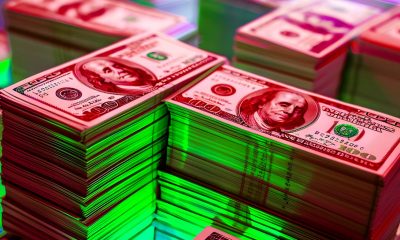
 others1 week ago
others1 week agoBank of America CEO Denies Alleged Debanking Trend, Says Regulators Need To Provide More Clarity To Avoid ‘Second-Guessing’ – Crypto News
-

 Cryptocurrency1 week ago
Cryptocurrency1 week agoEthereum Hits Major 2025 Year Peak Despite Price Dropping to $3,500 – Crypto News
-

 Technology1 week ago
Technology1 week agoGoogle DeepMind CEO Demis Hassabis explains why AI could replace doctors but not nurses – Crypto News
-
Business1 week ago
Analyst Spots Death Cross on XRP Price as Exchange Inflows Surge – Is A Crash Ahead ? – Crypto News
-
others1 week ago
Pi Network Invests In OpenMiind’s $20M Vision for Humanoid Robots- Is It A Right Move? – Crypto News
-
Business1 week ago
Pi Network Invests In OpenMiind’s $20M Vision for Humanoid Robots- Is It A Right Move? – Crypto News
-

 De-fi1 week ago
De-fi1 week agoTON Sinks 7.6% Despite Verb’s $558M Bid to Build First Public Toncoin Treasury Firm – Crypto News
-

 De-fi1 week ago
De-fi1 week agoCircle Extends Native USDC to Sei and Hyperliquid in Cross-Chain Push – Crypto News
-

 Blockchain1 week ago
Blockchain1 week agoXRP Must Hold $2.65 Support Or Risk Major Breakdown – Analyst – Crypto News
-

 Blockchain1 week ago
Blockchain1 week agoXRP Must Hold $2.65 Support Or Risk Major Breakdown – Analyst – Crypto News
-
Business1 week ago
Is Quantum Computing A Threat for Bitcoin- Elon Musk Asks Grok – Crypto News
-

 Technology1 week ago
Technology1 week agoElon Musk reveals why AI won’t replace consultants anytime soon—and it’s not what you think – Crypto News
-
others1 week ago
Japan CFTC JPY NC Net Positions down to ¥89.2K from previous ¥106.6K – Crypto News
-

 Cryptocurrency1 week ago
Cryptocurrency1 week agoHow to Trade Meme Coins in 2025 – Crypto News
-

 others1 week ago
others1 week agoIs Friday’s sell-off the beginning of a downtrend? – Crypto News
-

 Technology1 week ago
Technology1 week agoOppo K13 Turbo, K13 Turbo Pro to launch in India on 11 August: Expected price, specs and more – Crypto News
-
Blockchain1 week ago
Shiba Inu Team Member Reveals ‘Primary Challenge’ And ‘Top Priority’ Amid Market Uncertainty – Crypto News
-

 Technology1 week ago
Technology1 week agoOpenAI releases new reasoning-focused open-weight AI models optimised for laptops – Crypto News
-

 Blockchain7 days ago
Blockchain7 days agoCrypto Market Might Be Undervalued Amid SEC’s New Stance – Crypto News
-

 Metaverse7 days ago
Metaverse7 days agoChatGPT won’t help you break up anymore as OpenAI tweaks rules – Crypto News
-

 De-fi6 days ago
De-fi6 days agoCoinbase Pushes for ZK-enabled AML Overhaul Just Months After Data Breach – Crypto News
-
Cryptocurrency4 days ago
DWP Management Secures $200M in XRP Post SEC-Win – Crypto News
-
others1 week ago
SharpLink Buys the Dip, Acquires $100M in ETH for Ethereum Treasury – Crypto News
-

 others1 week ago
others1 week agoVisa and Mastercard’s Payment Dominance Not Threatened by Stablecoins, According to Execs – Crypto News
-
Business1 week ago
Breaking: U.S. CFTC Kicks off Crypto Sprint, Explores Spot and Futures Trading Together – Crypto News
-

 Cryptocurrency1 week ago
Cryptocurrency1 week agoLido Slashes 15% of Staff, Cites Operational Cost Concerns – Crypto News
-
others1 week ago
MetaPlanet Launches Online Clothing Store As Part of ‘Brand Strategy’ – Crypto News
-

 Technology7 days ago
Technology7 days agoiPhone users alert! Truecaller to discontinue call recording feature for iOS from September 30. Here’s what you can do… – Crypto News
-

 Technology7 days ago
Technology7 days agoiPhone users alert! Truecaller to discontinue call recording feature for iOS from September 30. Here’s what you can do… – Crypto News
-
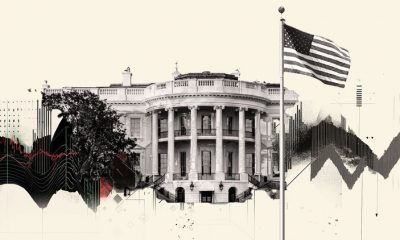
 others6 days ago
others6 days agoUS President Trump issues executive order imposing additional 25% tariff on India – Crypto News
-
Business6 days ago
Analyst Predicts $4K Ethereum Rally as SEC Clarifies Liquid Staking Rules – Crypto News
-

 De-fi6 days ago
De-fi6 days agoSEC Says Some Stablecoins Can Be Treated as Cash, but Experts Warn of Innovation Risk – Crypto News
-
Business6 days ago
XRP Price Prediction As $214B SBI Holdings Files for XRP ETF- Analyst Sees Rally to $4 Ahead – Crypto News
-
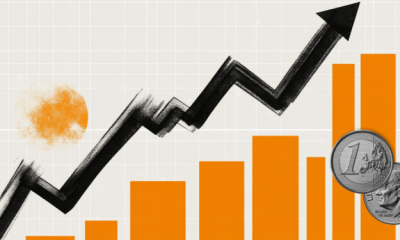
 others5 days ago
others5 days agoEUR firmer but off overnight highs – Scotiabank – Crypto News
-
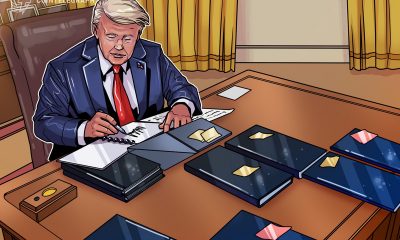
 Blockchain5 days ago
Blockchain5 days agoTrump to Sign an EO Over Ideological Debanking: Report – Crypto News
-

 De-fi5 days ago
De-fi5 days agoRipple Expands Its Stablecoin Payments Infra with $200M Rail Acquisition – Crypto News
-

 others5 days ago
others5 days agoRipple To Gobble Up Payments Platform Rail for $200,000,000 To Support Transactions via XRP and RLUSD Stablecoin – Crypto News
-
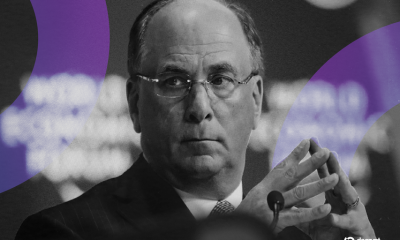
 Cryptocurrency4 days ago
Cryptocurrency4 days agoHarvard Reveals $116 Million Investment in BlackRock Bitcoin ETF – Crypto News
-

 Technology4 days ago
Technology4 days agoHumanoid Robots Still Lack AI Technology, Unitree CEO Says – Crypto News
-

 Technology1 week ago
Technology1 week agoAmazon Great Freedom Festival Sale 2025 vs Flipkart Freedom Sale: Comparing MacBook deals – Crypto News
-
Business1 week ago
India’s Jetking Targets 21,000 Bitcoin By 2032 As CFO Foresees $1M+ Price – Crypto News
-

 De-fi1 week ago
De-fi1 week agoCrypto Markets Stall as Trump’s Crypto Policy Report Fails to Spark Momentum – Crypto News
-

 Blockchain1 week ago
Blockchain1 week agoSharpLink Buys $54M in ETH, Holdings Reach $1.65B – Crypto News
-
Business1 week ago
Major U.S. Banks Now pushing “Chokepoint 3.0” to Kill Crypto: a16z Partner – Crypto News
-
others1 week ago
United States CFTC Oil NC Net Positions climbed from previous 153.3K to 156K – Crypto News

